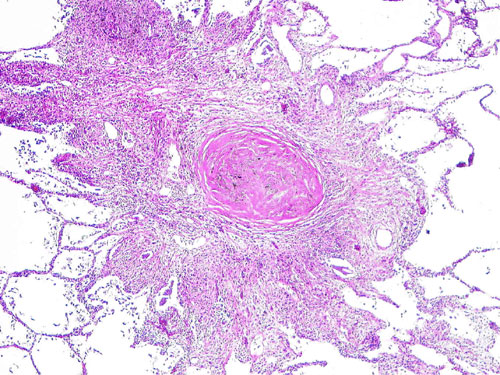
Silicosis
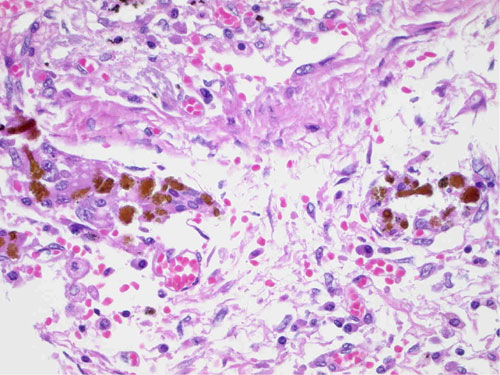
Asbestosis
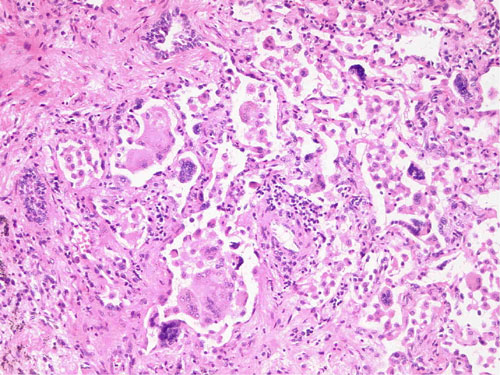
Carbide Lung
Indication for lung-dust analysis
If you suspect a work-place related lung disease on the basis of the occupational history and / or the clinical-radiological-histological findings, a lung-dust analysis may be performed to determine the type and load of dust in the lung. The results of the dust analysis should correspond with the tissue changes observed in histology. A complete lung-dust analysis with quantitative asbestos determination is also recommended for patients with pleural mesothelioma, if the occupational history shows no sign of asbestos exposure.
Appropriate material for lung-dust analysis
Formalin-fixed peripheral lung tissue (tumour-free) is best for lung-dust analysis. Ideally 3 pieces of about 2 cm3 each from 3 different sites in the lung (1 x apex upper lobe, 1 x apex lower lobe, and 1 x base of lower lobe) should be delivered. If no formalin-fixed tissue is available, paraffin-embedded tissue can be used – the paraffin blocks will be dissolved and destroyed for the analysis.
Lung-dust analysis can also be performed on bronchoalveolar lavage fluid, which requires a minimum of 20 ml, better 30 ml, non-filtered lavage liquid. For workplace security reasons a minimum of 10 ml of concentrated sodium hypochlorite (NaOCl, 12%) should be added.
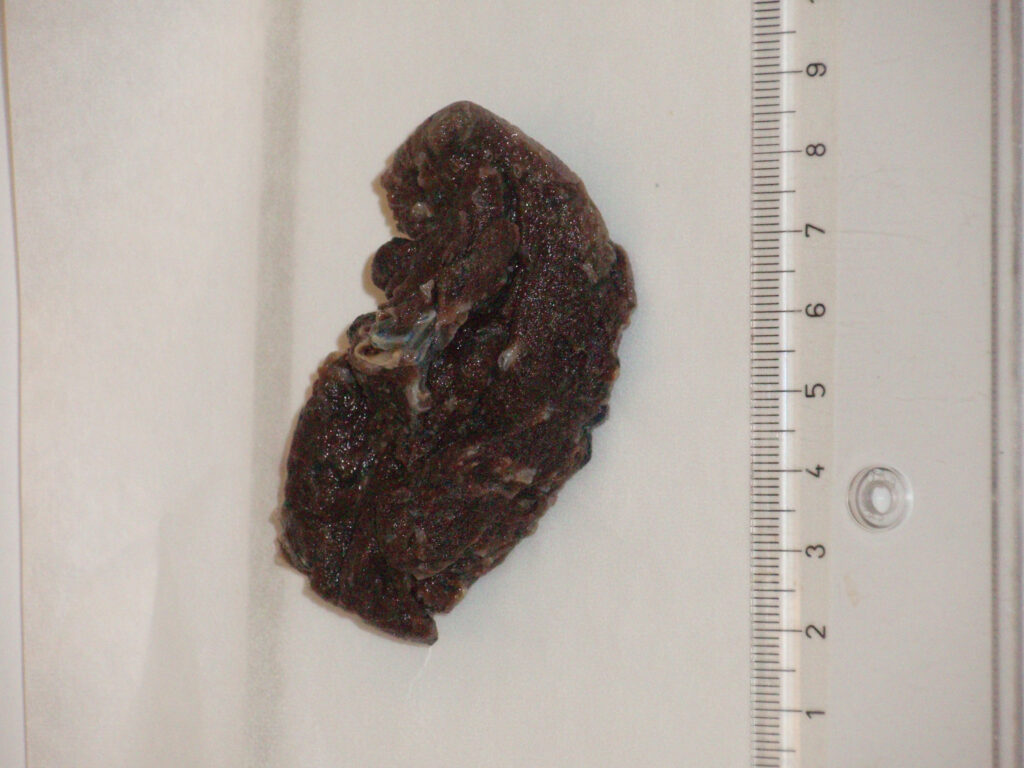
Formalin fixed lung tissue
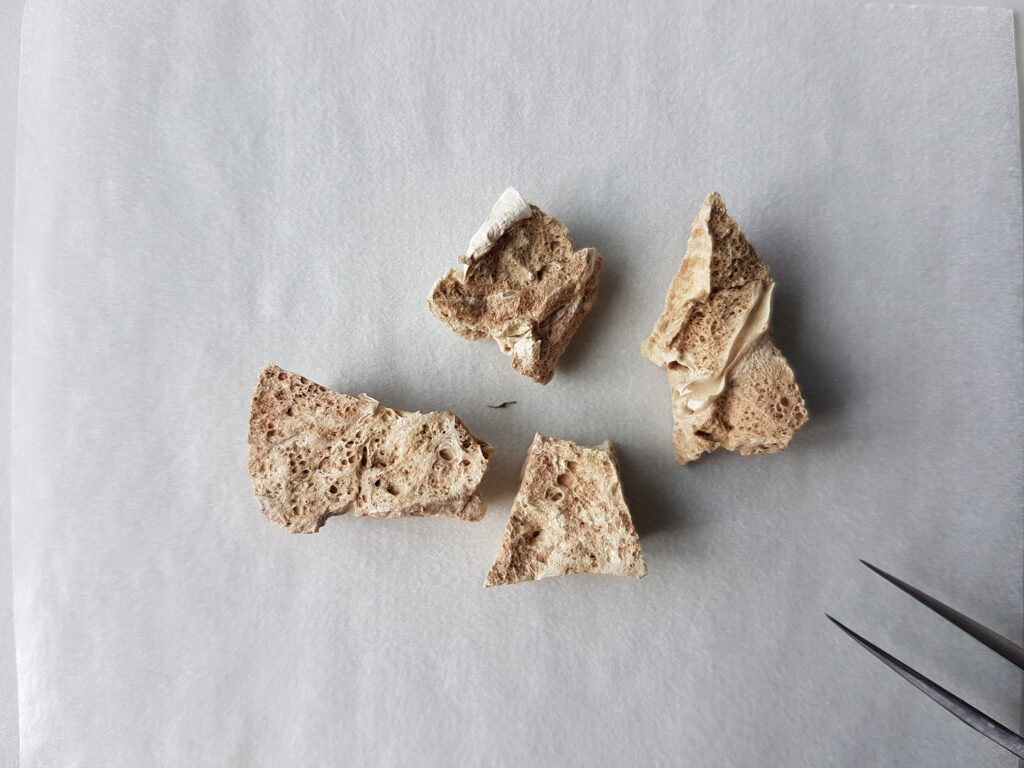
Freeze-dried lung tissue
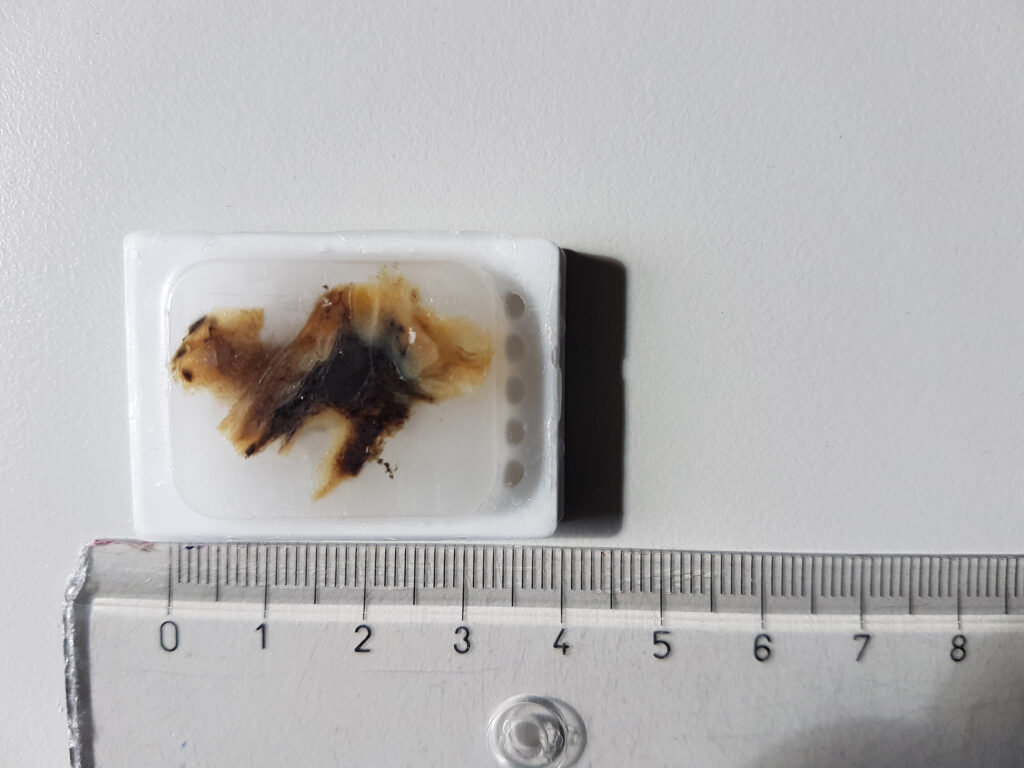
Kerosene block from lung tissue
Unsuitable are:
Tumour tissue or pleural tissue as well as transbronchial and bronchial biopsies and cryobiopsies.
Workflow of lung-dust analysis:
A pathologist of USZ will do a first histological investigation. This investigation shows if lung dust analysis is possible and useful. The pathologist then hands over the material to the silag laboratory with a request for analysis. At the silag lab, the samples are prepared for counting of ferruginous bodies (FB) and chemical fibre analysis with a transmission electron microscope (TEM/EDX). The results are then transmitted to the pathologist in a special analysis report. A complete dust analysis takes 2 to 4 weeks depending on workload.
Final report:
The comprehensive final report combines the histological findings with the results obtained from the FB and TEM/EDX analysis. This report is sent to the medical doctor who requested the analysis. A copy of the report is sent to the pathological institute which sent the material for analysis.